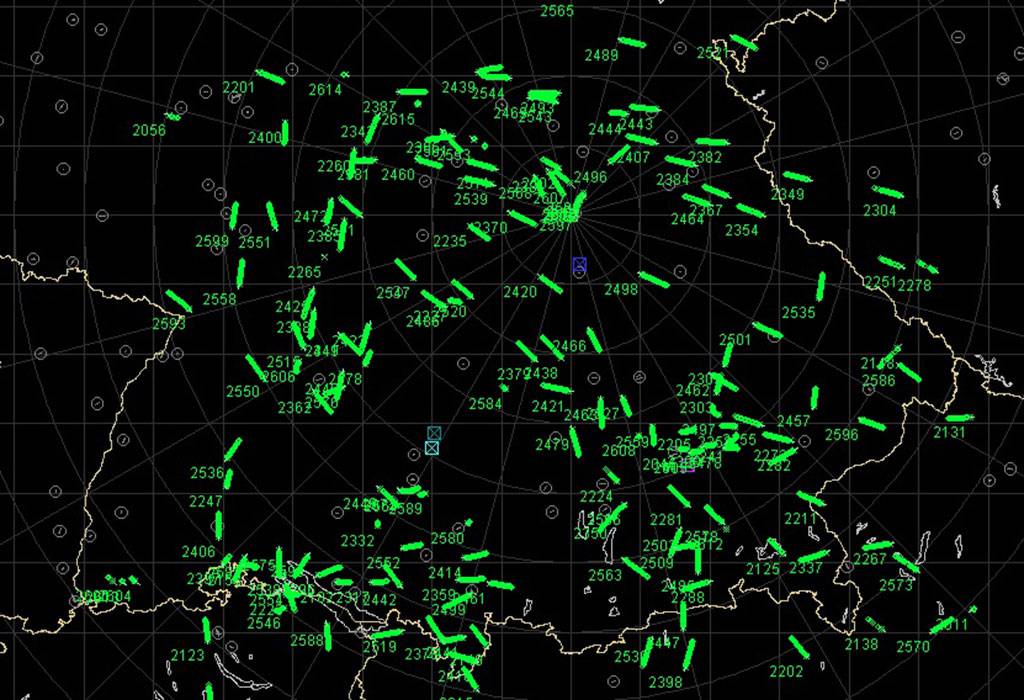GRAZ, Austria — German sensor specialist Hensoldt has released a standalone package of its Twinvis passive radar, a technology that promises the detection of aircraft optimized for stealth, the company announced.
Four customers have placed orders for the system, known as Twinvis Sheltered, company spokesperson Lothar Belz told Defense News. According to an Aug. 4 company statement, “several systems are under contract … inside and outside NATO.”
Belz declined to name the customers, noting that a key selling point of the product is the fact that nations aim to surprise would-be adversaries with the covert capability.
Unlike active radar, which emits radio waves and processes their echoes to determine an aircraft’s location, altitude and velocity, a passive system operates “quietly” – it does not broadcast any signals. Instead, Twinvis relies on airwaves coming from civilian digital television and FM radio stations that are reflected by the targets, according to the company. As a result, pilots are unaware that they are being tracked, and the passive sensors are much more difficult to detect and target.
The system achieved notoriety through Hensoldt’s claim that it had been used to track the stealthy American F-35 as it departed from the ILA air show in Berlin in 2018. Lockheed Martin, the aircraft’s manufacturer, stated that those F-35s had been fitted with radar reflectors and were flying with transponders on, making them easy to track. Nonetheless, experts say that passive radar, which picks up airwave disturbances caused by the airframe, may be a game changer in the cat-and-mouse game between stealth and detection technologies.
“The performance is so good both in terms of area covered and resolution that we are an option also for civilian airspace control,” Hensoldt spokesperson Belz told Defense News.
In late 2018, Hensoldt and the German Air Force demoed the passive radar system’s capabilities by using it to surveil the entire southern German airspace.
The German military has shown keen interest in the emerging technology, even creating a formal acquisition track for passive sensing technology following the demonstration, Defense News previously reported.
In the military realm, Belz said Hensoldt sees the system in the role of “gap-filler” for situations in which active radars cannot be used for technical or tactical reasons. It may also be used to prime active radars, reducing the amount of time they need to be turned on, which makes them a target.
Twinvis had previously only been available for integration in existing IRIS-T surface-launched missile systems, Belz said. According to the launcher’s manufacturer Diehl, this allowed for “omnidirectional 3D tracking of more than 180 objects up to a range of 250 km.”
Hensoldt expects a total volume of more than 100 orders, said Belz. A new production line at the company’s facility in Ulm is meant to fill orders on short notice.
Passive radar technology was first used by the German military in WWII – receivers at the Atlantic coast picked up on reflections of British radar signals. It was the emergence of better computer technology, however, that allowed for significant improvements in data quality, leading to the launch of Lockheed Martin’s commercial Silent Sentry system at the turn of the millennium. Hensoldt first presented Twinvis to the public in 2018.
Linus Höller is a Europe correspondent for Defense News. He covers international security and military developments across the continent. Linus holds a degree in journalism, political science and international studies, and is currently pursuing a master’s in nonproliferation and terrorism studies.








